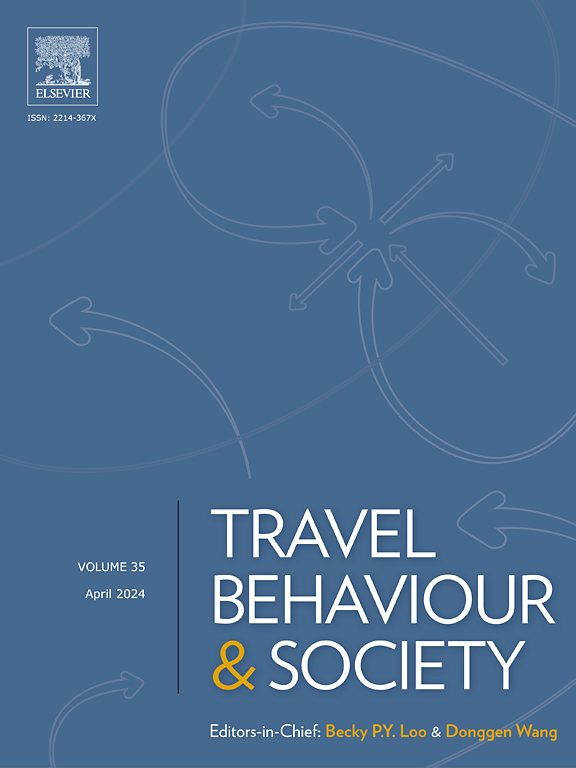Intermodal mobility: A psychometric and behavioural analysis of public transport users in Porto Metropolitan Area
IF 5.1
2区 工程技术
Q1 TRANSPORTATION
引用次数: 0
Abstract
As a consequence of the several negative externalities associated with car usage, there is a growing pressure to promote more sustainable mobility habits through supporting transport alternatives. An increasingly attractive solution is the concept of intermodal mobility, i.e., the combination of different modes of transport in a single trip, leveraging the strengths of each mode to provide a more sustainable and efficient transport option.
Despite its potential, research on intermodal mobility remains limited, with studies focusing on the travel behaviour of intermodal users being especially rare. However, to gain a comprehensive understanding of intermodality and its potential role in promoting sustainable mobility, it is crucial to explore the intermodal travel behaviour from the user’s point of view, including their patterns and motivations.
Accordingly, the goal of this study was to analyse the travel behaviour of intermodal users, focusing particularly on those that combine public transport (PT). Using a representative mobility survey conducted by the Portuguese National Statistics Institute to the Porto Metropolitan Area (with 40 393 respondents, 1868 of whom intermodal PT users), we have identified and characterized distinct profiles of intermodal PT users through marketing segmentation.
The market segmentation analyses have revealed two profiles of intermodal PT users based on their motivations and perceptions of using PT (i.e., psychometric segmentation) and four profiles based on their main modes of intermodal travel (i.e., behavioural segmentation). Notably, a connection between the psychometric and behavioural segments has been found: choice riders are significantly more likely to use rail options such as metro and train, while captive riders are much more dependent on buses. These findings hold significant policy implications for the promotion of intermodal PT systems, including by highlighting the competitiveness of rail against the private car and the reliance of the most socially disadvantaged groups on the bus.
由于与使用汽车相关的一些负面外部因素,通过支持替代交通方式来促进更可持续的交通习惯的压力越来越大。一个越来越有吸引力的解决方案是多式联运的概念,即在一次出行中结合使用不同的交通方式,充分利用每种交通方式的优势,提供更可持续、更高效的交通选择。
本文章由计算机程序翻译,如有差异,请以英文原文为准。
求助全文
约1分钟内获得全文
求助全文
来源期刊

Travel Behaviour and Society
TRANSPORTATION-
CiteScore
9.80
自引率
7.70%
发文量
109
期刊介绍:
Travel Behaviour and Society is an interdisciplinary journal publishing high-quality original papers which report leading edge research in theories, methodologies and applications concerning transportation issues and challenges which involve the social and spatial dimensions. In particular, it provides a discussion forum for major research in travel behaviour, transportation infrastructure, transportation and environmental issues, mobility and social sustainability, transportation geographic information systems (TGIS), transportation and quality of life, transportation data collection and analysis, etc.
 求助内容:
求助内容: 应助结果提醒方式:
应助结果提醒方式:


